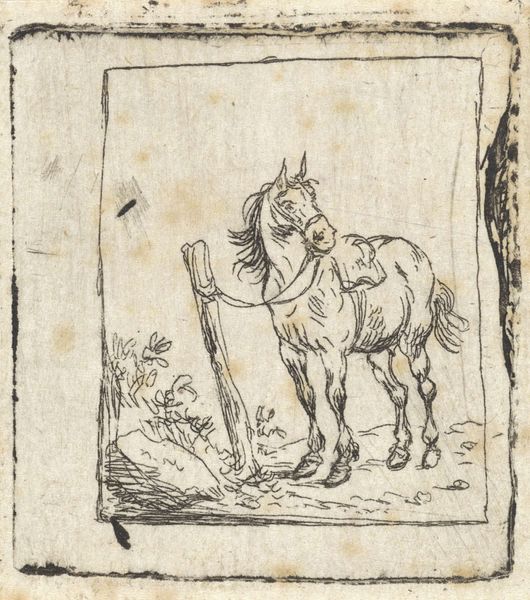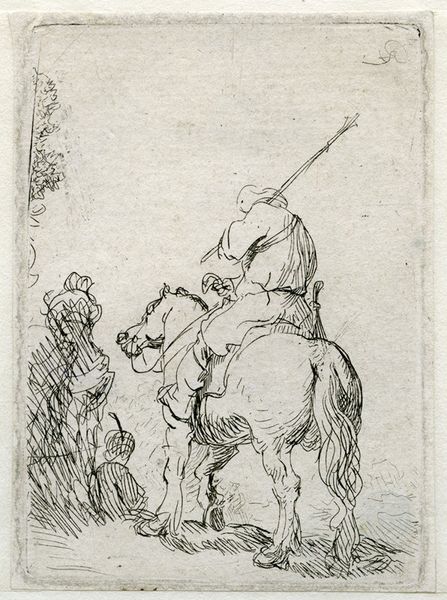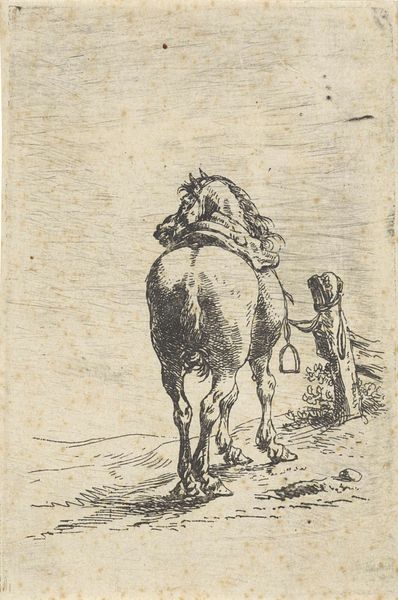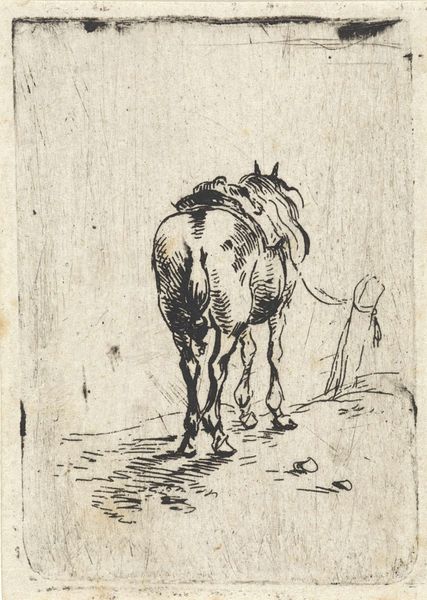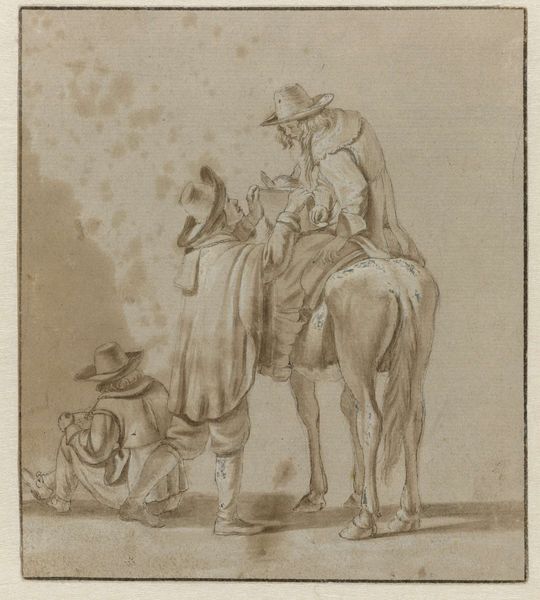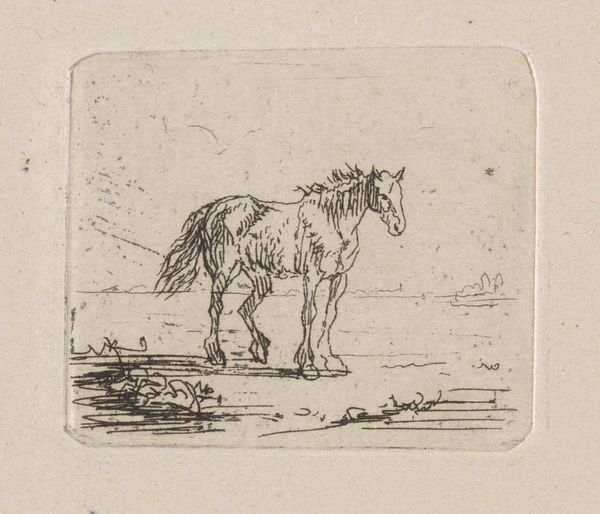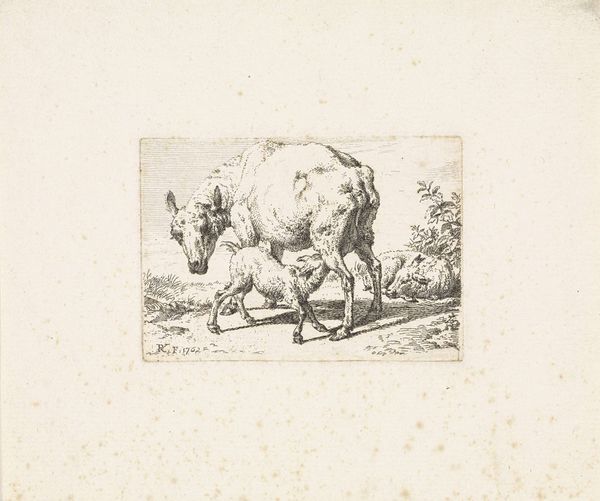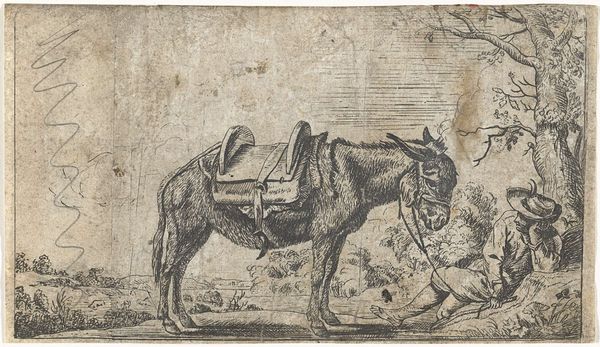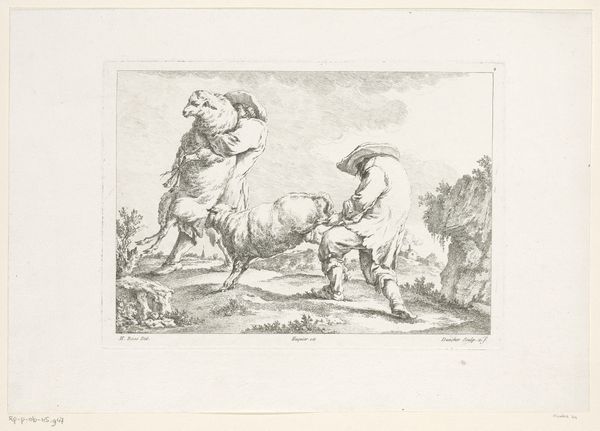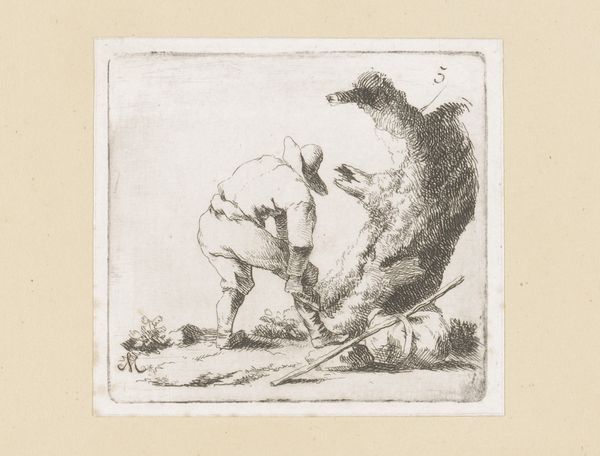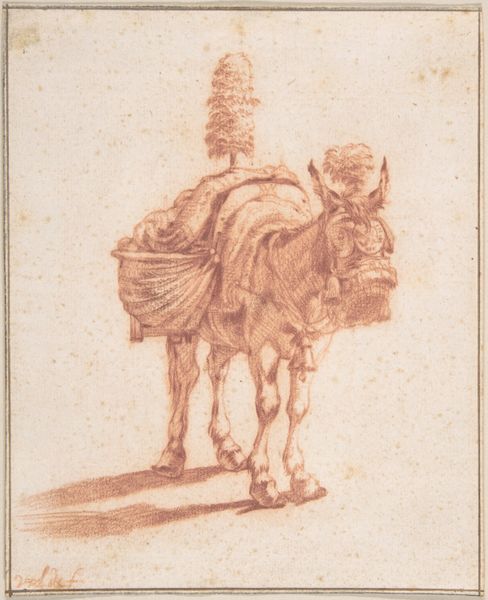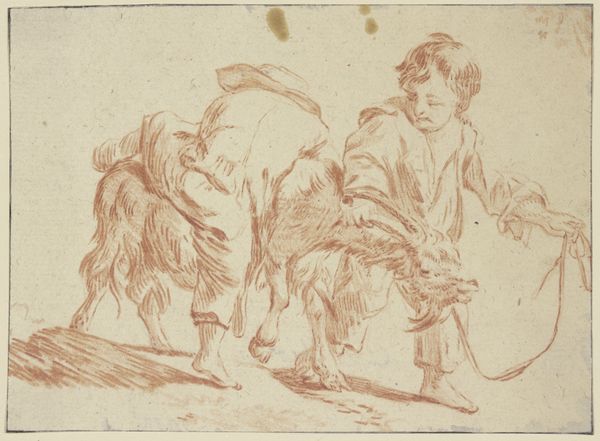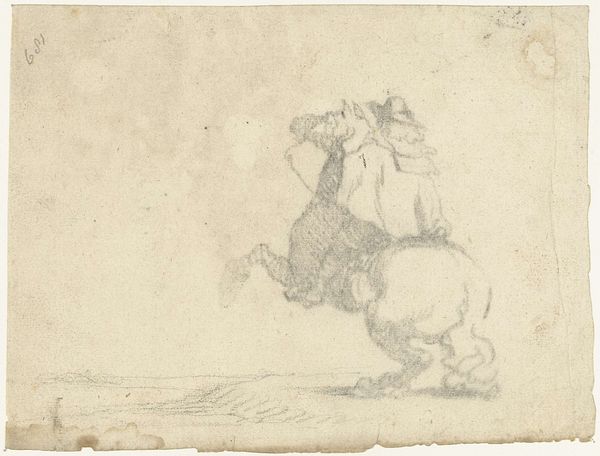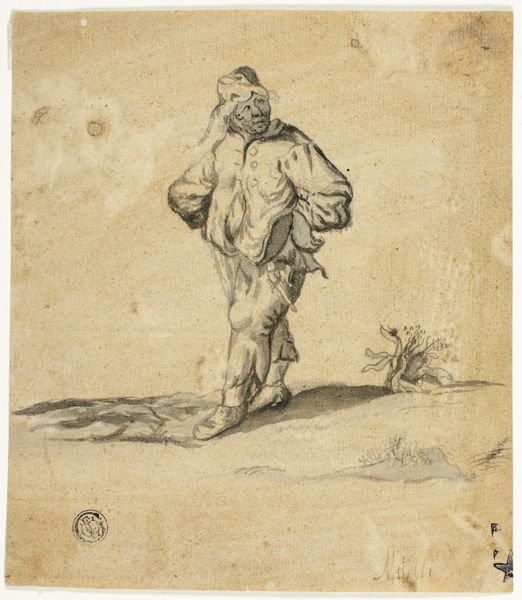
drawing, paper, ink, pen
#
drawing
#
toned paper
#
quirky sketch
#
dutch-golden-age
#
pen sketch
#
sketch book
#
landscape
#
figuration
#
paper
#
personal sketchbook
#
ink
#
sketchwork
#
pen-ink sketch
#
horse
#
pen work
#
sketchbook drawing
#
pen
#
genre-painting
#
sketchbook art
#
realism
Dimensions: height 35 mm, width 35 mm
Copyright: Rijks Museum: Open Domain
Curator: This rather unassuming drawing offers us a glimpse into the working process of Pieter Cornelisz. Verbeeck, a Dutch Golden Age artist known for his genre scenes and equestrian subjects. Here, in "Ruiter op drinkend paard," or "Rider on a Drinking Horse," created sometime between 1620 and 1654, we see a scene rendered with pen and ink on toned paper. Editor: My immediate impression is one of tranquility, even of fatigue. The subdued monochrome palette and the posture of the horse create a sense of stillness, like a moment captured at the end of a long journey. Curator: Indeed, the drawing captures a genre scene quite typical of the period: the everyday moment of a traveler pausing to refresh his horse. But look closer – the rider is facing away, almost anonymous. His identity seems less significant than the simple act of quenching thirst. It speaks to a universal need, transcending social standing. The horse itself is not just an animal, but a symbol of labor, of reliance. Editor: The lines, though simple, are incredibly expressive. The curvature of the horse's back as it bends to drink, the almost slumped posture of the rider – it all contributes to this feeling. I'm intrigued by the relationship between line weight and form; how areas of denser hatching suggest depth and volume, especially around the horse's hindquarters. Curator: Absolutely. Horses held considerable symbolic weight in 17th-century Dutch culture, representing status and economic prosperity, but here Verbeeck presents a much more humble interpretation. It almost feels like a study, something from a personal sketchbook where the artist isn't trying to make grand pronouncements, just documenting life. The composition is deceptively clever. Editor: Precisely. This work stands out from many elaborate depictions, focusing instead on basic, expressive components. This makes you focus on those aspects specifically. It becomes as much a formal exercise as it is representational. Curator: A private meditation on the mundane, elevated by quiet skill. I come away feeling there's something beautiful to be found in simplicity, in shared moments. Editor: Yes, by dissecting it visually, it becomes something far deeper than a sketch; it embodies shared vulnerability between animal and human.
Comments
No comments
Be the first to comment and join the conversation on the ultimate creative platform.
